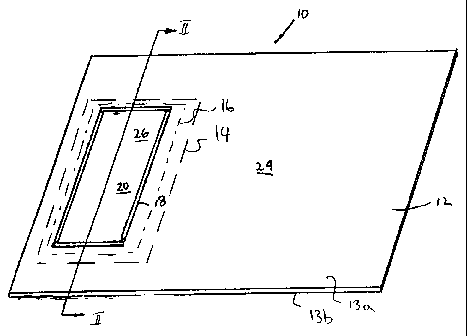Some of the information on this Web page has been provided by external sources. The Government of Canada is not responsible for the accuracy, reliability or currency of the information supplied by external sources. Users wishing to rely upon this information should consult directly with the source of the information. Content provided by external sources is not subject to official languages, privacy and accessibility requirements.
Any discrepancies in the text and image of the Claims and Abstract are due to differing posting times. Text of the Claims and Abstract are posted:
| (12) Patent: | (11) CA 2324795 |
|---|---|
| (54) English Title: | INSERTED LASER WELDED BLANKS |
| (54) French Title: | FLANS RAPPORTES SOUDES PAR FAISCEAU LASER |
| Status: | Term Expired - Post Grant Beyond Limit |
| (51) International Patent Classification (IPC): |
|
|---|---|
| (72) Inventors : |
|
| (73) Owners : |
|
| (71) Applicants : |
|
| (74) Agent: | BLAKE, CASSELS & GRAYDON LLP |
| (74) Associate agent: | |
| (45) Issued: | 2009-02-10 |
| (22) Filed Date: | 2000-10-25 |
| (41) Open to Public Inspection: | 2002-04-25 |
| Examination requested: | 2005-10-25 |
| Availability of licence: | N/A |
| Dedicated to the Public: | N/A |
| (25) Language of filing: | English |
| Patent Cooperation Treaty (PCT): | No |
|---|
| (30) Application Priority Data: | None |
|---|
A method of creating a tailored blank assembly, the assembly comprising a first blank having an aperture and a second blank having an embossment. The first and second blanks being positioned in a face to face relation and the configuration of the embossment being complementary to and nested within the aperture. The first and second blanks are welded together about the embossment to join the first and second blanks.
Méthode de création d'ensemble de flans taillés sur mesure. L'ensemble comprend un premier flan présentant une ouverture et un deuxième flan présentant une saillie. Les premier et deuxième flans sont placés face à face, et la configuration de la saillie épouse l'ouverture et s'emboîte dans celle-ci. Les premier et deuxième flans sont soudés ensemble autour de la saillie.
Note: Claims are shown in the official language in which they were submitted.
Note: Descriptions are shown in the official language in which they were submitted.

2024-08-01:As part of the Next Generation Patents (NGP) transition, the Canadian Patents Database (CPD) now contains a more detailed Event History, which replicates the Event Log of our new back-office solution.
Please note that "Inactive:" events refers to events no longer in use in our new back-office solution.
For a clearer understanding of the status of the application/patent presented on this page, the site Disclaimer , as well as the definitions for Patent , Event History , Maintenance Fee and Payment History should be consulted.
| Description | Date |
|---|---|
| Inactive: Expired (new Act pat) | 2020-10-26 |
| Common Representative Appointed | 2019-10-30 |
| Common Representative Appointed | 2019-10-30 |
| Inactive: IPC deactivated | 2014-05-17 |
| Inactive: IPC deactivated | 2014-05-17 |
| Inactive: IPC expired | 2014-01-01 |
| Inactive: IPC expired | 2014-01-01 |
| Inactive: First IPC assigned | 2014-01-01 |
| Inactive: IPC assigned | 2014-01-01 |
| Inactive: IPC assigned | 2014-01-01 |
| Inactive: IPC assigned | 2014-01-01 |
| Grant by Issuance | 2009-02-10 |
| Inactive: Cover page published | 2009-02-09 |
| Pre-grant | 2008-11-26 |
| Inactive: Final fee received | 2008-11-26 |
| Notice of Allowance is Issued | 2008-07-08 |
| Letter Sent | 2008-07-08 |
| Notice of Allowance is Issued | 2008-07-08 |
| Inactive: Approved for allowance (AFA) | 2008-05-22 |
| Amendment Received - Voluntary Amendment | 2008-03-07 |
| Amendment Received - Voluntary Amendment | 2007-12-20 |
| Inactive: S.30(2) Rules - Examiner requisition | 2007-06-22 |
| Amendment Received - Voluntary Amendment | 2006-04-04 |
| Inactive: IPC from MCD | 2006-03-12 |
| Letter Sent | 2005-11-09 |
| Request for Examination Received | 2005-10-25 |
| Request for Examination Requirements Determined Compliant | 2005-10-25 |
| All Requirements for Examination Determined Compliant | 2005-10-25 |
| Revocation of Agent Requirements Determined Compliant | 2004-11-01 |
| Inactive: Office letter | 2004-11-01 |
| Inactive: Office letter | 2004-11-01 |
| Appointment of Agent Requirements Determined Compliant | 2004-11-01 |
| Appointment of Agent Request | 2004-10-12 |
| Revocation of Agent Request | 2004-10-12 |
| Inactive: Agents merged | 2003-02-07 |
| Application Published (Open to Public Inspection) | 2002-04-25 |
| Inactive: Cover page published | 2002-04-24 |
| Inactive: Correspondence - Formalities | 2002-01-29 |
| Inactive: Correspondence - Transfer | 2002-01-29 |
| Letter Sent | 2001-09-12 |
| Inactive: Single transfer | 2001-07-27 |
| Inactive: First IPC assigned | 2001-01-19 |
| Inactive: Filing certificate - No RFE (English) | 2000-12-08 |
| Filing Requirements Determined Compliant | 2000-12-08 |
| Application Received - Regular National | 2000-12-07 |
There is no abandonment history.
The last payment was received on 2008-10-09
Note : If the full payment has not been received on or before the date indicated, a further fee may be required which may be one of the following
Please refer to the CIPO Patent Fees web page to see all current fee amounts.
Note: Records showing the ownership history in alphabetical order.
| Current Owners on Record |
|---|
| POWERLASERS LTD. |
| Past Owners on Record |
|---|
| BRIAN MORRIS |
| GARY KEITH BLACK |
| MICHAEL JAMES STAPLES |